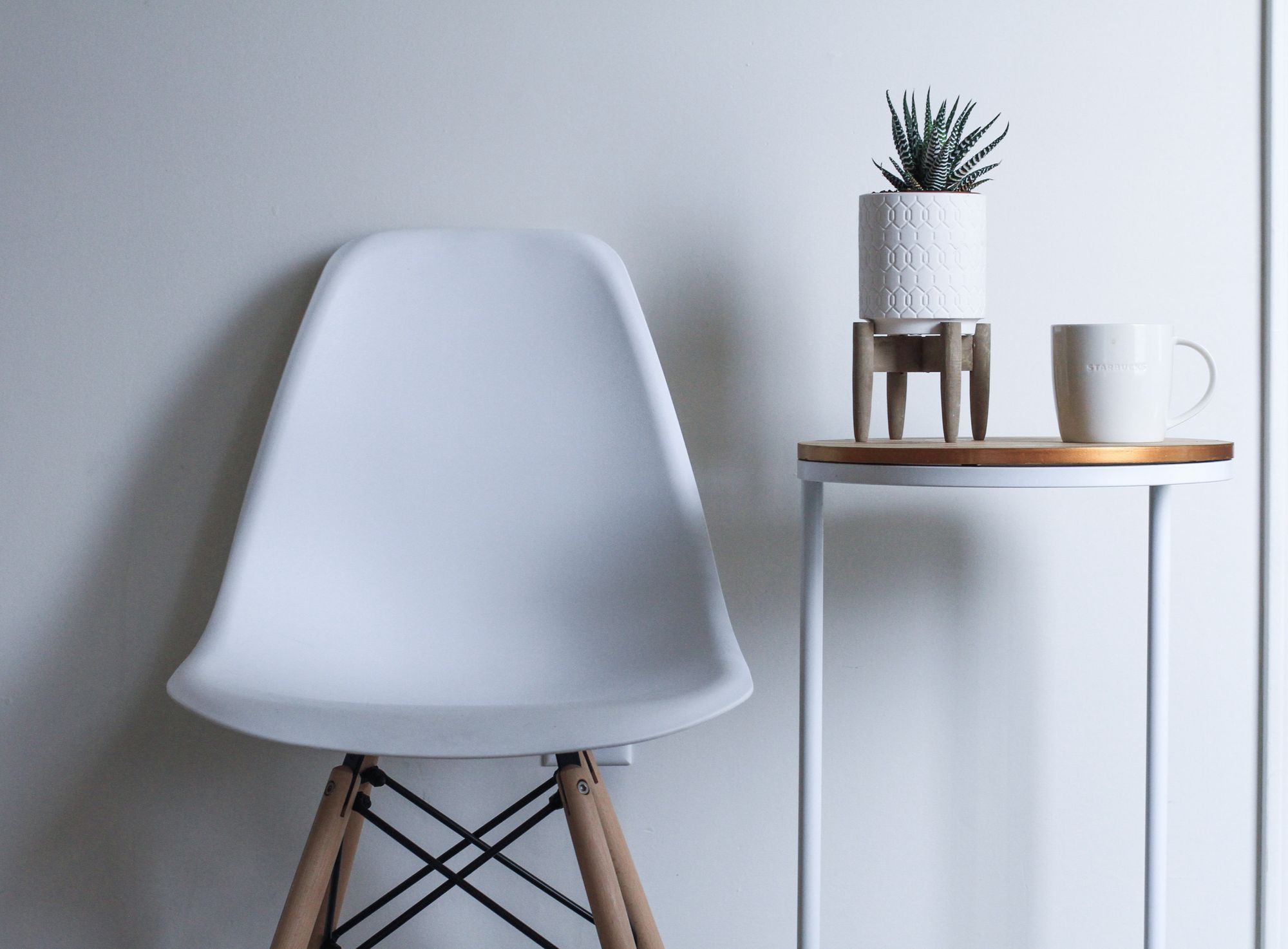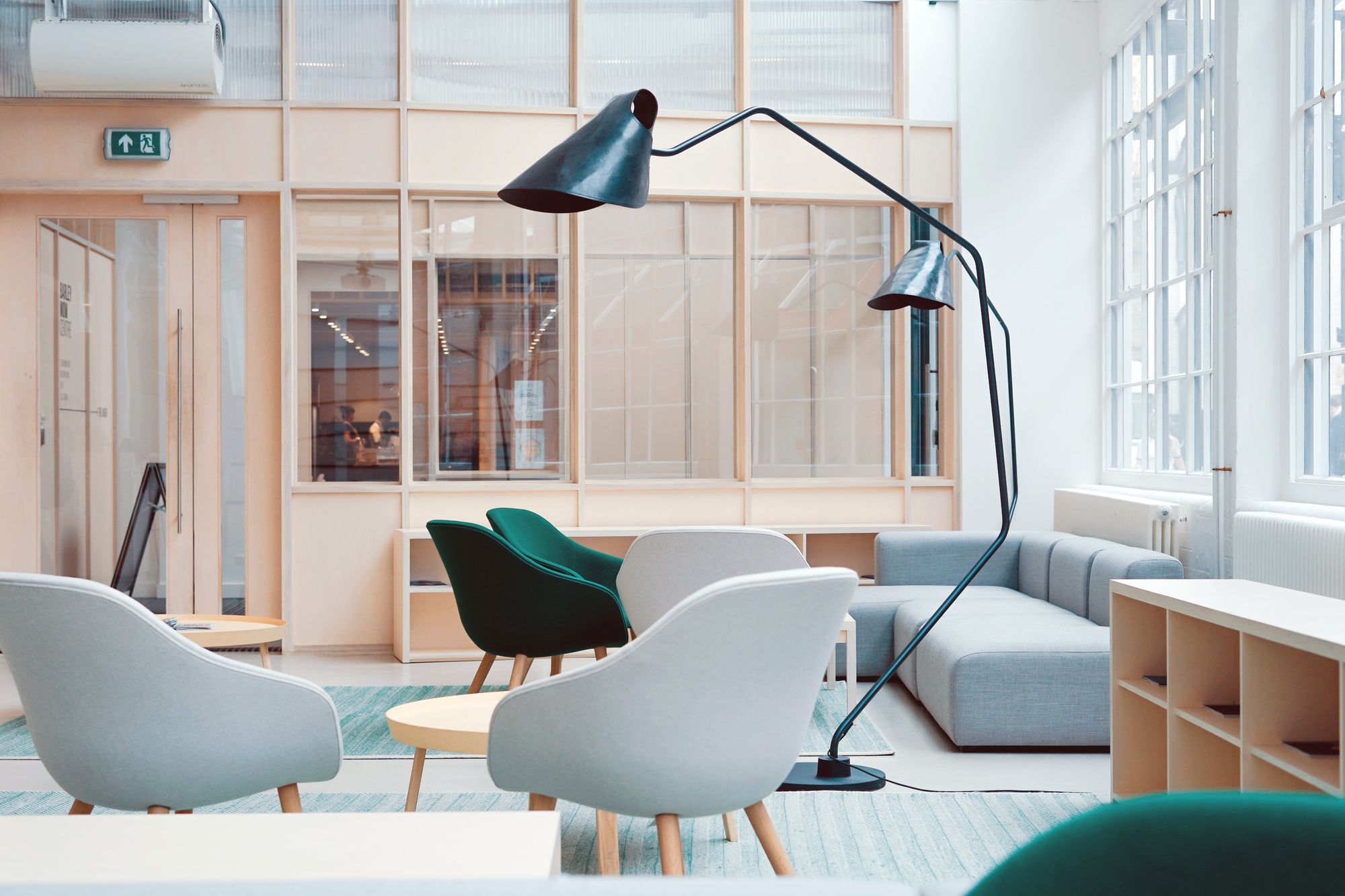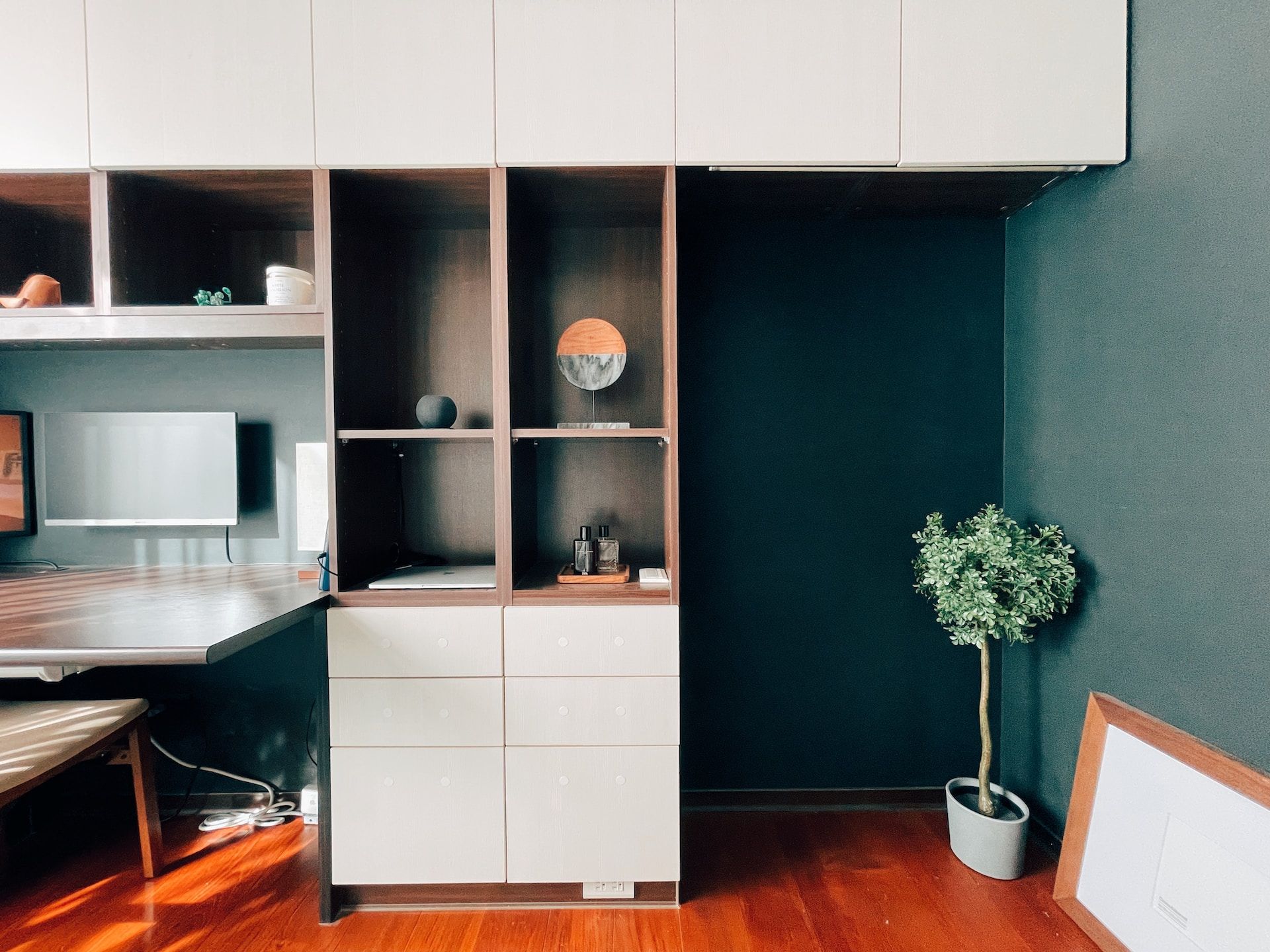In recent years, there has been a growing awareness of the need for more sustainable manufacturing practices to reduce environmental impacts and improve the long-term viability of businesses.
One promising solution that has emerged is the use of biodegradable materials in the production of furniture. Biodegradable furniture is furniture that is made from natural materials that can decompose naturally over time, without causing harm to the environment.
This article will explore the potential of biodegradable furniture for sustainable manufacturing, including its environmental, economic, and social benefits. Before we dive in, let's take a look at the table of content below:
- Explanation of Sustainable Manufacturing
- Importance of Sustainable Manufacturing
- Potential of Biodegradable Furniture: An Overview
- What is Biodegradable Furniture?
- How Biodegradable Furniture Differs from Traditional Furniture?
- Materials used in Biodegradable Furniture
- Benefits of Biodegradable Furniture
- Challenges of Biodegradable Furniture
- Future of Biodegradable Furniture
- Wrapping Up
- How Deskera Can Assist You?
Let's get started!
Explanation of Sustainable Manufacturing
Sustainable manufacturing refers to the process of producing goods using methods that minimize negative impacts on the environment, while also being socially and economically responsible.
It further involves taking into account the entire lifecycle of a product, from raw materials extraction, through production, use, and disposal or recycling. Sustainable manufacturing aims to reduce waste, conserve natural resources, and minimize pollution and emissions. Along with promoting the well-being of workers and the surrounding community.
Furthermore, it involves the use of renewable energy sources, the adoption of cleaner production techniques, and the implementation of sustainable supply chain practices.
The ultimate goal of sustainable manufacturing is to create products that meet the needs of the present generation without compromising the ability of future generations to meet their own needs.
Importance of Sustainable Manufacturing
Sustainable manufacturing is important for several reasons:
Environmental protection:
Sustainable manufacturing reduces the negative impact of industrial processes on the environment by minimizing waste, conserving natural resources, and reducing pollution and emissions. This helps to protect the planet and promote a healthier, more sustainable future.
Cost savings:
Sustainable manufacturing practices can lead to significant cost savings for companies. For example, reducing energy and water use can lower operational costs, while minimizing waste can reduce disposal costs.
Improved reputation:
Consumers are increasingly concerned about the environmental impact of the products they purchase, and companies that adopt sustainable manufacturing practices can enhance their reputation and appeal to environmentally conscious customers.
Compliance with regulations:
Governments around the world are introducing regulations to promote sustainable manufacturing and reduce the negative impact of industrial processes on the environment. Furthermore, companies that adopt sustainable practices can ensure compliance with these regulations and avoid penalties and fines.
Innovation and competitiveness:
Sustainable manufacturing encourages innovation in the development of new materials, production techniques, and products that are environmentally friendly. Companies that invest in sustainable manufacturing practices can enhance their competitiveness and improve their long-term prospects.
Potential of Biodegradable Furniture: An Overview
The potential of biodegradable furniture refers to the possibility of using sustainable, environmentally friendly materials to produce furniture that can be easily broken down by natural processes at the end of its useful life.
Furthermore, biodegradable furniture has the potential to significantly reduce the environmental impact of the furniture industry, which is one of the largest contributors to deforestation and waste.
By using materials that can biodegrade naturally, such as plant-based polymers or natural fibers, biodegradable furniture can be composted or returned to the natural ecosystem at the end of its life, rather than being sent to landfills or incinerated. This has the potential to reduce waste, conserve resources, and minimize pollution, while also promoting the well-being of workers and the surrounding community.
The potential of biodegradable furniture also includes the possibility of developing innovative manufacturing processes and new materials that are more sustainable and efficient, which can lead to cost savings, improved reputation, and enhanced competitiveness for companies in the furniture industry.
What is Biodegradable Furniture?
Biodegradable furniture is furniture that is made from materials that can be broken down naturally by living organisms, such as bacteria or fungi, into simpler compounds like water, carbon dioxide, and organic matter.
Furthermore, biodegradable materials are typically derived from renewable resources, such as plants or fungi, and can be composted or returned to the natural ecosystem at the end of their useful life, rather than being sent to landfills or incinerated.
The most common materials used to make biodegradable furniture include plant-based polymers, such as polylactic acid (PLA) and polyhydroxyalkanoates (PHAs), and natural fibers, such as bamboo, hemp, and cork. These materials have a lower environmental impact than traditional furniture materials, such as wood, plastic, and metal, as they require less energy and resources to produce and can be recycled or reused.

Biodegradable furniture can include a variety of products, such as chairs, tables, sofas, and beds, and can be designed in a range of styles and sizes. Biodegradable furniture can be as durable and functional as traditional furniture, while also being environmentally friendly and sustainable.
How Biodegradable Furniture Differs from Traditional Furniture?
Biodegradable furniture differs from traditional furniture in several ways:
Materials:
Biodegradable furniture is made from materials that can be broken down naturally by living organisms, such as plant-based polymers and natural fibers. Traditional furniture, on the other hand, is typically made from non-biodegradable materials such as wood, plastic, and metal.
Environmental impact:
Biodegradable furniture has a lower environmental impact than traditional furniture because it is made from renewable resources that require less energy and resources to produce. Traditional furniture production contributes to deforestation, pollution, and greenhouse gas emissions.
End-of-life disposal:
Biodegradable furniture can be composted or returned to the natural ecosystem at the end of its useful life, rather than being sent to landfills or incinerated. Traditional furniture often ends up in landfills, where it can take hundreds of years to decompose and release harmful pollutants.
Durability:
Biodegradable furniture can be as durable and functional as traditional furniture, but may require different care and maintenance due to the nature of the materials used.
Innovation:
Biodegradable furniture encourages innovation in the development of new materials, production techniques, and products that are environmentally friendly. Traditional furniture production may be more resistant to change due to established production methods and the cost of switching to new materials and processes.
Materials used in Biodegradable Furniture
Biodegradable furniture can be made from a variety of materials that can biodegrade naturally at the end of their useful life. Here are some of the most common materials used in biodegradable furniture:
Plant-based polymers:
Plant-based polymers, such as polylactic acid (PLA) and polyhydroxyalkanoates (PHAs), are biodegradable alternatives to traditional plastic. These materials are made from renewable resources, such as corn starch or sugarcane, and can be composted or biodegraded naturally.
Natural fibers:
Natural fibers, such as bamboo, hemp, cork, and jute, are renewable and biodegradable materials that can be used in furniture production. These materials are lightweight, strong, and durable, and can be woven or molded into a variety of shapes and designs.
Wood alternatives:
Wood alternatives, such as mycelium, a mushroom-based material, and compressed straw or grass, can be used as a substitute for traditional wood in furniture production. These materials are biodegradable, lightweight, and have a low environmental impact.

Recycled materials:
Recycled materials, such as recycled paper, cardboard, or plastic, can be used to make biodegradable furniture. These materials have already been used and would otherwise end up in landfills, so using them in furniture production helps to reduce waste and conserve resources.
Biodegradable coatings and finishes:
Biodegradable coatings and finishes, such as natural oils and waxes, can be used to protect and enhance the appearance of biodegradable furniture. These coatings and finishes can be easily biodegraded at the end of the furniture's life, without causing harm to the environment.
Benefits of Biodegradable Furniture
Biodegradable furniture offers a sustainable and environmentally friendly alternative to traditional furniture made from non-biodegradable materials.
Furthermore, the use of renewable resources and materials that can biodegrade naturally at the end of their useful life helps to reduce waste and minimize the environmental impact of the furniture industry.
In addition to being eco-friendly, biodegradable furniture can also offer a range of other benefits, including cost savings, enhanced reputation, and improved competitiveness.
This section will explore the many benefits of biodegradable furniture and its potential to transform the furniture industry into a more sustainable and responsible sector.
Environmental Benefits
There are several environmental benefits to using biodegradable furniture:
Reduces waste: Biodegradable furniture can be composted or returned to the natural ecosystem at the end of its useful life, rather than being sent to landfills or incinerated. This helps to reduce waste and conserve resources.
Lower carbon footprint: Biodegradable furniture is made from renewable resources that require less energy and resources to produce than traditional furniture. This reduces the carbon footprint of furniture production and helps to mitigate climate change.
Fewer harmful chemicals: Biodegradable furniture is often made without harmful chemicals or toxins that can pollute the environment during production and disposal. This helps to protect the health of workers and reduce environmental pollution.
Preserves natural resources: Biodegradable furniture is often made from renewable resources, such as plants or fungi, that can be sustainably harvested without depleting natural resources. This helps to preserve biodiversity and ecosystem services.
Supports circular economy: Biodegradable furniture can be recycled or reused at the end of its useful life, which supports a circular economy model that aims to minimize waste and maximize resource efficiency.
Ultimately, biodegradable furniture offers a more sustainable and environmentally friendly alternative to traditional furniture, helping to reduce waste, conserve resources, and mitigate the environmental impacts of the furniture industry.
Economic Benefits
There are several economic benefits to using biodegradable furniture:
Lower production costs: Biodegradable furniture is often made from renewable resources that require less energy and resources to produce than traditional furniture. This can lead to lower production costs and higher profit margins for furniture manufacturers.
Cost savings for consumers: Biodegradable furniture can be more cost-effective for consumers over the long-term due to its durability and the potential for composting or recycling at the end of its useful life.
Enhanced reputation: Using biodegradable furniture can enhance the reputation of furniture manufacturers and retailers as environmentally responsible and sustainable businesses. Moreover, this can help to attract environmentally conscious consumers and increase sales.
Improved competitiveness: As consumers become more environmentally aware and demand more sustainable products, companies that offer biodegradable furniture can gain a competitive advantage over those that do not.
Access to new markets: Biodegradable furniture offers the opportunity for furniture manufacturers to access new markets, such as eco-tourism, sustainable architecture, and green building projects.
Overall, the economic benefits of biodegradable furniture include lower production costs, cost savings for consumers, enhanced reputation, improved competitiveness, and access to new markets.
Social Benefits
There are several social benefits to using biodegradable furniture:
Healthier indoor environments: Biodegradable furniture is often made without harmful chemicals or toxins that can cause indoor air pollution and impact the health of occupants. This can lead to healthier indoor environments and improved quality of life for people.
Improved working conditions: Biodegradable furniture production often requires less energy and resources, leading to less intensive and less hazardous manufacturing processes. This can result in improved working conditions for workers in the furniture industry.
Job creation: The use of renewable resources and biodegradable materials in furniture production can create new job opportunities in sustainable agriculture, forestry, and natural material extraction.

Community development: Biodegradable furniture production can support community development through the use of local resources and small-scale production methods. This can contribute to economic growth and social cohesion in local communities.
Environmental education: Biodegradable furniture can be used as a tool for environmental education and awareness-raising, helping to promote sustainable consumption and lifestyle choices.
Overall, the social benefits of biodegradable furniture include healthier indoor environments, improved working conditions, job creation, community development, and environmental education. These benefits can contribute to improved quality of life and social well-being for people.
Challenges of Biodegradable Furniture
While biodegradable furniture has many benefits, there are also several challenges that must be addressed in order to realize its full potential. These challenges include:
Limited availability of materials
One of the challenges of biodegradable furniture is the limited availability of materials. Many renewable resources, such as bamboo, cork, and hemp, require specific growing conditions and may not be readily available in all locations. This can limit the scalability and production potential of biodegradable furniture.
To address this challenge, furniture manufacturers may need to explore alternative materials or develop new methods for growing and harvesting renewable resources. For example, manufacturers may need to invest in sustainable agriculture practices to ensure a steady supply of bamboo or other materials.
In addition, manufacturers may need to consider the use of recycled or upcycled materials to supplement renewable resources. This can help to reduce the reliance on new materials and increase the availability of resources for biodegradable furniture production.
Finally, policymakers can play a role in supporting the availability of materials for biodegradable furniture. This may include investments in sustainable agriculture practices or the development of regulations to promote the use of renewable resources in manufacturing. By addressing the limited availability of materials, the furniture industry can move towards a more sustainable and responsible production model.
High cost of production
Another challenge of biodegradable furniture is the high cost of production. Biodegradable furniture can be more expensive to produce than traditional furniture due to the cost of materials and production processes. This can make it difficult for consumers to afford, and may limit its market potential.
To address this challenge, furniture manufacturers may need to invest in research and development to find ways to reduce the cost of production. This may include developing new manufacturing processes or finding ways to optimize the use of materials. Manufacturers may also need to explore alternative financing models, such as crowdfunding or community investment, to help fund the production of biodegradable furniture.

In addition, policymakers can play a role in supporting the production of biodegradable furniture by offering incentives or subsidies for sustainable manufacturing practices. This can help to reduce the cost of production and make biodegradable furniture more accessible to consumers.
Finally, consumers can play a role in supporting the production of biodegradable furniture by choosing to purchase sustainable products and supporting manufacturers who prioritize sustainability. By creating demand for biodegradable furniture, consumers can help to drive down the cost of production and make sustainable furniture more affordable for everyone.
Durability issues
Durability is another challenge of biodegradable furniture. Biodegradable furniture may be less durable than traditional furniture, which can limit its lifespan and require more frequent replacement. This can be a challenge for consumers who are looking for long-lasting and reliable furniture.
To address this challenge, furniture manufacturers may need to invest in research and development to find ways to increase the durability of biodegradable furniture. This may include exploring new materials or developing new manufacturing processes that can improve the strength and longevity of biodegradable furniture.
Manufacturers may also need to provide better care instructions for biodegradable furniture to help consumers maintain its durability over time. For example, manufacturers may need to provide guidance on proper cleaning techniques or recommend protective coatings to help prevent damage or wear.
Finally, consumers can play a role in supporting the durability of biodegradable furniture by treating it with care and following the manufacturer's care instructions. By properly caring for biodegradable furniture, consumers can help to extend its lifespan and reduce the need for frequent replacement.
By addressing durability issues, biodegradable furniture can become a more attractive option for consumers who are looking for sustainable furniture that can withstand daily use and wear.
Consumer education
Consumer education is a critical challenge in promoting biodegradable furniture. Many consumers are not aware of the benefits of biodegradable furniture, and may not understand how to properly care for or dispose of these products. This lack of awareness can limit the demand for biodegradable furniture and slow the adoption of sustainable manufacturing practices.
To address this challenge, manufacturers and policymakers can invest in consumer education initiatives that help to raise awareness of the benefits of biodegradable furniture. This may include developing marketing campaigns that highlight the environmental, economic, and social benefits of sustainable furniture, as well as providing educational resources on proper care and disposal practices.
Manufacturers can also work to improve the labeling and certification of biodegradable furniture to help consumers make informed purchasing decisions. For example, manufacturers may need to provide clear information on the materials used in their products and the expected lifespan of biodegradable furniture.
Finally, retailers can play a role in promoting consumer education by providing educational materials and in-store demonstrations of biodegradable furniture. By providing consumers with hands-on experiences and clear information, retailers can help to increase demand for biodegradable furniture and drive the adoption of sustainable manufacturing practices.
Ultimately, consumer education is a critical factor in promoting biodegradable furniture and driving the adoption of sustainable manufacturing practices. By investing in education initiatives and providing clear information, manufacturers and policymakers can help to create a more informed and engaged consumer base that supports sustainable furniture production.
Cost
Cost is another major challenge of biodegradable furniture, as these products can often be more expensive to produce than traditional furniture. This can make it difficult for manufacturers to offer biodegradable furniture at competitive prices and can limit consumer demand for sustainable furniture options.
To address this challenge, manufacturers can explore new production processes and materials that can help to reduce the cost of biodegradable furniture. For example, manufacturers may need to invest in research and development to identify more cost-effective and sustainable materials, or explore new manufacturing processes that can reduce the amount of waste and energy used in production.
In addition, policymakers can play a role in supporting the production of biodegradable furniture by offering incentives or subsidies for sustainable manufacturing practices. This can help to reduce the cost of production and make biodegradable furniture more affordable for consumers.
Finally, consumers can also play a role in promoting affordable biodegradable furniture by supporting sustainable manufacturers and making informed purchasing decisions. By choosing to buy sustainable products and supporting manufacturers who prioritize sustainability, consumers can help to drive down the cost of production and make sustainable furniture more accessible to everyone.
Overall, addressing the cost challenge of biodegradable furniture will require a collective effort from manufacturers, policymakers, and consumers. By working together to identify new cost-effective materials and production processes, we can create a more sustainable and affordable future for furniture production.
Disposal
Disposal is another challenge associated with biodegradable furniture. While biodegradable furniture is designed to break down naturally at the end of its lifespan, improper disposal can still pose a significant environmental threat. If biodegradable furniture is sent to a landfill, it can release harmful chemicals and greenhouse gases as it decomposes, contributing to pollution and climate change.
To address this challenge, manufacturers and policymakers can work to promote responsible disposal practices for biodegradable furniture. This may include developing recycling programs or composting facilities that can properly handle biodegradable furniture at the end of its lifespan.
In addition, manufacturers can work to design biodegradable furniture with disposal in mind, using materials and production processes that are compatible with recycling or composting. For example, manufacturers may need to consider the types of adhesives and finishes used in their products, as well as the compatibility of materials with existing recycling and composting infrastructure.
Finally, consumers can play a role in promoting responsible disposal practices by properly disposing of biodegradable furniture at the end of its lifespan. This may include researching local recycling and composting facilities and working with manufacturers to ensure that their products are properly disposed of in an environmentally friendly manner.
Overall, responsible disposal practices are a critical aspect of promoting sustainable furniture production. By working together to develop recycling and composting infrastructure and promoting responsible disposal practices, we can ensure that biodegradable furniture contributes to a more sustainable and environmentally friendly future.
Manufacturing processes
The manufacturing processes used to produce biodegradable furniture can also present challenges. Traditional manufacturing processes often rely on energy-intensive and environmentally harmful practices, such as the use of toxic chemicals and excessive water and energy consumption.
To address this challenge, manufacturers can explore new sustainable manufacturing processes that prioritize environmental and social sustainability. This may include using renewable energy sources, such as solar or wind power, to power manufacturing facilities, or implementing closed-loop production processes that minimize waste and reduce environmental impact.
In addition, manufacturers can work to reduce the amount of energy and water used in production by implementing more efficient technologies and processes. For example, manufacturers may need to invest in new equipment that uses less energy and water to produce furniture, or explore new materials and production processes that require less energy and water.
Finally, manufacturers can work to ensure that their production processes prioritize worker safety and fair labor practices. This may include implementing safe working conditions, fair wages, and benefits for workers, as well as using environmentally sustainable materials that do not harm workers or communities.
Overall, sustainable manufacturing processes are a critical aspect of promoting biodegradable furniture and driving the adoption of sustainable furniture production. By investing in sustainable manufacturing practices that prioritize environmental, economic, and social sustainability, manufacturers can create a more sustainable and socially responsible future for furniture production.
Future of Biodegradable Furniture
The future of biodegradable furniture looks promising, as consumers increasingly prioritize sustainability and eco-friendliness in their purchasing decisions. As more manufacturers invest in sustainable production processes and materials, the availability and affordability of biodegradable furniture are likely to increase, driving demand and further innovation in the industry.
In addition, advancements in technology and material science may lead to new, more durable and cost-effective biodegradable materials, further driving the adoption of sustainable furniture production. With a continued focus on promoting environmental, economic, and social sustainability in the furniture industry, the future of biodegradable furniture looks bright.
Advancements in Biodegradable Materials
Advancements in biodegradable materials are an exciting area of innovation in the furniture industry. As technology and material science continue to evolve, new biodegradable materials are being developed that offer improved durability, strength, and cost-effectiveness.
For example, researchers are exploring new ways to create biodegradable plastics that are more resistant to degradation and can withstand high stress and impact. These new materials could be used to produce more durable and long-lasting furniture that still breaks down naturally at the end of its lifespan.
In addition, researchers are also developing new biodegradable materials that offer improved moisture resistance and fire retardancy, making them suitable for use in a wider range of applications. These materials could potentially replace less sustainable options, such as traditional plastics or synthetic fabrics, in a variety of furniture products.
Overall, advancements in biodegradable materials offer exciting opportunities for sustainable furniture production. As new materials are developed and adopted, the availability, durability, and affordability of biodegradable furniture are likely to increase, further driving demand and innovation in the industry.
Potential for Mass Production
The potential for mass production of biodegradable furniture is growing as more manufacturers invest in sustainable production processes and materials. As consumer demand for eco-friendly and sustainable products continues to rise, manufacturers are recognizing the importance of offering more environmentally responsible furniture options.
To achieve mass production of biodegradable furniture, manufacturers must first address the challenges associated with sourcing sustainable materials, ensuring product durability and affordability, and implementing sustainable manufacturing processes. By investing in research and development, improving supply chains, and using new technologies, manufacturers can streamline production processes and make biodegradable furniture more widely available and affordable.
In addition, increased demand for biodegradable furniture could also help to drive down costs and increase production volumes, making it a more attractive option for manufacturers and consumers alike. As the industry continues to evolve, it is likely that new innovations and advancements will emerge, further improving the potential for mass production of biodegradable furniture.
Role of Consumers in Promoting Sustainable Manufacturing
Consumers play a crucial role in promoting sustainable manufacturing by driving demand for eco-friendly and socially responsible products. By making more informed purchasing decisions and supporting companies that prioritize sustainability, consumers can help to create a more sustainable and socially responsible future.
There are several ways that consumers can promote sustainable manufacturing, including:
Choosing sustainable products: By choosing eco-friendly and socially responsible products, consumers can encourage manufacturers to prioritize sustainability and promote more sustainable production practices.
Educating themselves: Consumers can educate themselves on sustainable manufacturing practices and learn about the environmental and social impacts of the products they purchase. This can help them make more informed decisions and choose products that align with their values.
Sharing their views: Consumers can also use their voices to advocate for sustainable manufacturing practices by sharing their views with manufacturers, policymakers, and other stakeholders. By raising awareness and calling for change, consumers can help to drive industry-wide improvements.
Supporting sustainable companies: Finally, consumers can support companies that prioritize sustainability by choosing to purchase products from these companies and promoting their efforts to others. This can help to create a market for sustainable products and encourage more companies to adopt sustainable manufacturing practices.
Overall, consumers have a powerful role to play in promoting sustainable manufacturing and driving positive change in the industry. By making more informed purchasing decisions and advocating for sustainability, consumers can help to create a more sustainable and socially responsible future for all.
Wrapping Up
In conclusion, biodegradable furniture offers a promising solution for sustainable manufacturing, with the potential to reduce waste, lower greenhouse gas emissions, improve soil health, and improve brand reputation.
However, there are several challenges that must be overcome, such as the limited availability of materials, high costs of production, durability issues, consumer education, and disposal. To realize the full potential of biodegradable furniture, manufacturers and consumers alike must work together to address these challenges and promote more sustainable manufacturing practices.
By making more informed purchasing decisions, supporting sustainable companies, and promoting sustainable manufacturing practices, consumers can play a key role in driving industry-wide improvements and creating a more sustainable future for all.
How Deskera Can Assist You?
Deskera's integrated financial planning tools allow investors to better plan their investments and track their progress. It can help investors make decisions faster and more accurately.
Deskera Books enables you to manage your accounts and finances more effectively. Maintain sound accounting practices by automating accounting operations such as billing, invoicing, and payment processing.

Deskera CRM is a strong solution that manages your sales and assists you in closing agreements quickly. It not only allows you to do critical duties such as lead generation via email, but it also provides you with a comprehensive view of your sales funnel.
Deskera People is a simple tool for taking control of your human resource management functions. The technology not only speeds up payroll processing but also allows you to manage all other activities such as overtime, benefits, bonuses, training programs, and much more. This is your chance to grow your business, increase earnings, and improve the efficiency of the entire production process.
Final Takeaways
We've arrived at the last section of this guide. Let's have a look at some of the most important points to remember:
- Biodegradable furniture has the potential to significantly reduce the environmental impact of the furniture industry, which is one of the largest contributors to deforestation and waste.
- The most common materials used to make biodegradable furniture include plant-based polymers, such as polylactic acid (PLA) and polyhydroxyalkanoates (PHAs), and natural fibers, such as bamboo, hemp, and cork. These materials have a lower environmental impact than traditional furniture materials, such as wood, plastic, and metal, as they require less energy and resources to produce and can be recycled or reused.
- Biodegradable furniture can be composted or returned to the natural ecosystem at the end of its useful life, rather than being sent to landfills or incinerated. Traditional furniture often ends up in landfills, where it can take hundreds of years to decompose and release harmful pollutants.
- Plant-based polymers, such as polylactic acid (PLA) and polyhydroxyalkanoates (PHAs), are biodegradable alternatives to traditional plastic. These materials are made from renewable resources, such as corn starch or sugarcane, and can be composted or biodegraded naturally.
- Biodegradable furniture is made from renewable resources that require less energy and resources to produce than traditional furniture. This reduces the carbon footprint of furniture production and helps to mitigate climate change.
- Advancements in technology and material science may lead to new, more durable and cost-effective biodegradable materials, further driving the adoption of sustainable furniture production. With a continued focus on promoting environmental, economic, and social sustainability in the furniture industry, the future of biodegradable furniture looks bright.
- Consumers can support companies that prioritize sustainability by choosing to purchase products from these companies and promoting their efforts to others. This can help to create a market for sustainable products and encourage more companies to adopt sustainable manufacturing practices.
Related Articles













